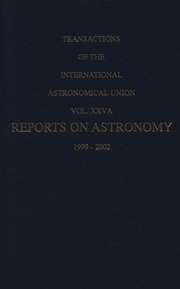No CrossRef data available.
Article contents
Encouraging the International Development of Antarctic Astronomy
Published online by Cambridge University Press: 25 April 2016
Extract
The Antarctic plateau provides the best site conditions on the Earth for a wide range of astronomical observations, both of photons and particles. This is a result of the unique combination of cold, dry and tenuous air found only there. Wintertime temperatures average below -60˚C, with minimal diurnal variation, the precipitable water vapour content is below 250 μm, the katabatic wind is low on top of the plateau and there are no jet streams at high altitude. The vast quantities of pure ice can be used as an absorber for particle detectors. Secondary benefits include continuous viewing for any source visible, lack of pollution and dust in the atmosphere, and low electromagnetic interference. Considerable activity is now focussed at the South Pole on developing facilities for astronomy. Initial investigations of higher sites have begun, particularly at Dome C.
- Type
- Working Groups of the Executive Committee
- Information
- Copyright
- Copyright © Kluwer 1997


